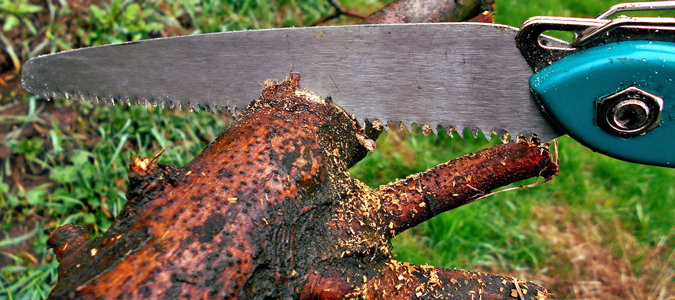
Large, established trees are a fixture in many older neighborhoods. Think about the new home developments you’ve visited, and they all likely have one thing in common: no established trees! These older trees provide shade on hot summer days, a home and food source for animals, play areas for children, and can even provide energy savings when blocking sunlight from entering a home.
With all of these benefits come several challenges. Property lines in neighborhoods exist in fixed areas, and tree growth of both roots and branches do not conform to any set location. Homeowners commonly run into situations where a tree sits on a property line, or a tree trunk grows in one yard with its branches hanging into another yard.
As a homeowner, what is the best way to deal with a shared tree that requires maintenance?
First, understand that this is a very common issue. The root systems of trees – especially the beautiful oaks that are commonplace in central Texas – can be enormous. Over the life of an oak tree, its roots may spread to encompass an area that is four to seven times the size of the tree’s crown! If there are other trees of the same species in the area, their root systems may merge over time to create a communal root system. These root systems work to deliver water and nutrients up through the trunk and branches of the tree, with the end goal of producing leaves.
Many types of trees require very little watering given their extensive root systems and are more likely to suffer from overwatering if the exposed roots are submerged. Given the interconnected nature of trees, it is critical to exercise caution when approaching any variety of tree maintenance.
Once you understand the implications of tree maintenance, make sure you know the law in your area as well. In the City of Austin, homeowners have a legal right to maintain a tree that may be compromising their property. Thick, heavy branches hanging directly over your home, garden, or other yard feature are all examples of how a neighbor’s tree might encroach on and endanger your property. And though homeowners do have the right to maintain the tree, maintenance must be carefully handled to preserve the life of the tree.
The next step is to share your plans with your neighbor.
This can be as easy as walking over to your neighbor’s house for a quick chat to looking up the actual homeowner if the home is a rental. Make every effort to speak with the homeowner before performing any maintenance. Opening the lines of communication early can prevent tempers from flaring later down the line.
Try to make sure your neighbor knows exactly what you are planning (i.e., which trees are of concern, what actions you plan to take, and when you plan to take them).
And you might be able to save yourself some money as well. What if your neighbor was already planning to trim trees in the yard and would be happy to share the cost with you? You’ll never know unless you ask.
Now that you’ve talked to your neighbor, make sure you learn as much as possible about the tree in question before any maintenance begins.
- What type of tree is it?
- Are the specific times of year it is best to prune?
- Are there any recommendations or regulations in your city regarding pruning?
These are all important questions to ask before trimming begins. And even if you can’t answer these questions, a certified arborist certainly can.
Contact a certified arborist (or several) for a quote on the tree maintenance you require. Arborists should be familiar with the type of tree and time of year trimming should occur. If they aren’t as knowledgeable as you would hope, move on to the next one on your list.
Be at home when the deed is done.
So you’ve talked to your neighbor, and you have a quote from a certified arborist, and a date to trim the tree. The last thing you can do to avoid any hiccups is to be home while the trimming is taking place. If your neighbor brings up any concerns during the process, you’ll be there to help address them with the tree maintenance team.
Trees provide lots of benefits to homeowners and neighborhoods, and may occasionally require maintenance and cooperation between neighbors. The best way to handle a shared tree is to equip yourself with as much information as possible and make sure your neighbor is kept in the loop throughout the process.
Comments
What if the tree is in the neighbors hard and is completely dead and it may fall onto your property and onto your house- there’s no way of getting the situation resolved without the neighbor getting involved. Is it still a civil matter